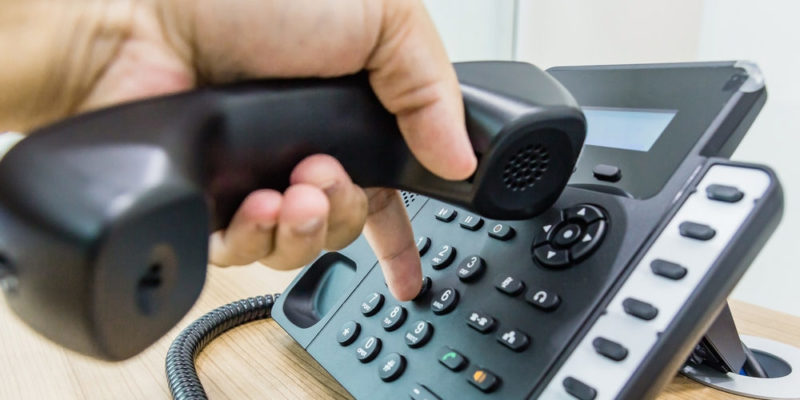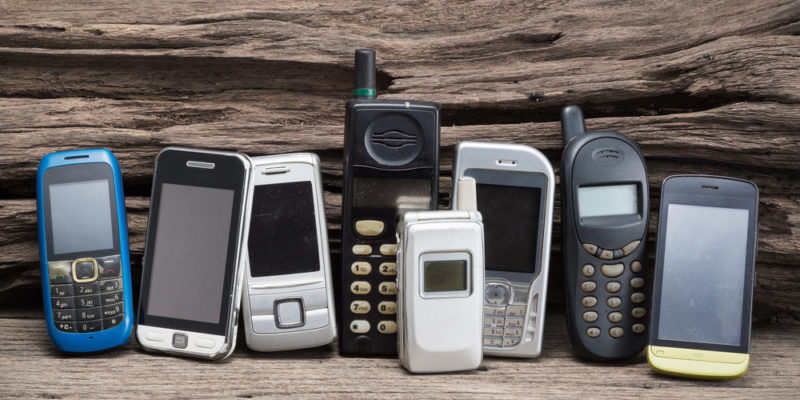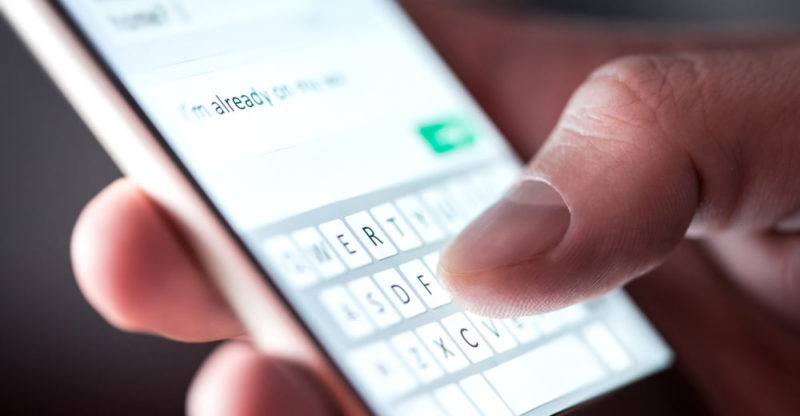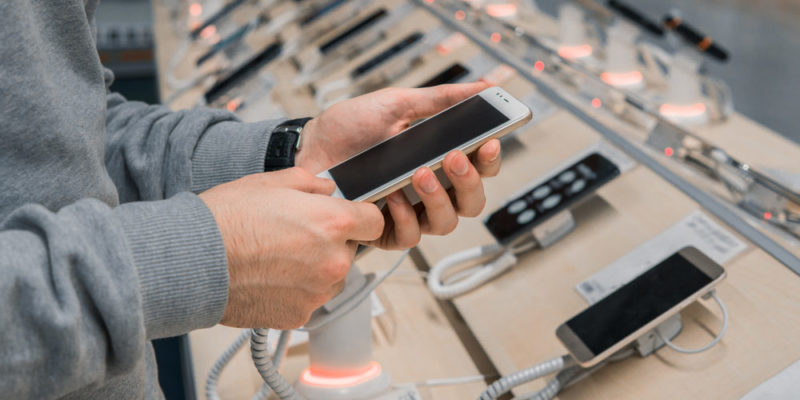We explain what the telephone is, who invented it and how this device works. Also, what are its characteristics, classification and more.
What is the telephone?
A telephone (from the Greek tele , "distance, far", and phonos , "sound") is a telecommunication device that allows encoding, decoding and transmitting sounds at a distance through the use of electrical signals.
However, the telephone forever revolutionized human telecommunications and within a few decades reached such popularity that there was one in every corner , then in every home, and more recently, one in every pocket.
In addition, the revolution unleashed in telecommunications by the invention of the telephone opened the field for other forms of electronic telecommunication , such as computer networks . In other words, it established the first antecedent of the globalized and interconnected world of the 21st century.
Who Invented the Telephone?

Alexander Graham Bell and Elisha Gray were long considered the inventors of the telephone, which is completely untrue.
The two of them were the first to patent the invention in 1876 , but in reality the person who conceived and designed the first device, under the name of "teletrophone", was Antonio Meucci in 1854.
This confusion was cleared up by the United States Congress in 2002, and is due to the fact that Meucci lacked the financial means to formalize the patent with the United States government, and was only able to present a brief description .
Interestingly, in 1861 Johan Philipp Reis independently invented another prototype , but was unable to patent it in time either.
Why was the telephone invented?
The story of the invention of the telephone suggests that Meucci wanted to connect his office on the ground floor of his house , with the bedroom where his wife rested immobilized by rheumatism.
The poverty in which the Italian-American inventor lived prevented him from patenting it in time , having to content himself with a kind of notice that, moreover, was intentionally lost at the patent office.
When the Graham Bell company patented it instead in 1876, Meucci initiated a series of lawsuits to claim its intellectual authorship.
However, his deficiencies with the language and the intricate network of bribery and gangster manipulations of the great Bell company prevented him from succeeding in a series of lawsuits, despite the fact that all the instances admitted the irrefutable of his evidence.
Meucci died poor and bitter some years later , and his invention would not be recognized until a century and a half later.
How does the phone work?

Telephones, in principle, work by transforming electrical impulses into sound waves and vice versa.
To do this, they used two circuits that operate at the same time: one attends to the conversation (analog part of the device) and another that handles the dialing and the call. It is convenient to see them separately.
- Conservation circuit. It is made up of four components: a headset, a carbon microphone, a hybrid coil, and an impedance of 600 ohms, at least in traditional phone models. The microphone originates the signal, receiving the sound waves from the voice and converting them into a number of electrical impulses that, on the other side, are received and reconverted by the headset.
- Dial circuit. Composed of a disk that allows a switch to be activated that generates a series of pulses according to the number dialed (for example, 0 has 10 keystrokes), or by a keyboard that operates the same way, but sending two tones for each keystroke. This circuit is activated when you pick up the handset or turn on the telephone, and when a call is received from this same circuit, an impulse is given off that by means of an electromagnet causes a metallic bell to oscillate (or that activates an electronic generator, in modern versions).
Phone types

Today we know many types of telephone, such as:
- Landline. The first invented model is connected to the telephone line by means of a cable, through which the electrical impulses are transmitted. They can be classified into:
- Public. Available to anyone who pays, using coins or cards.
- Private Those owned by each household and who belong to a family that pays the cost of their calls on a monthly basis.
They can also be classified into:
- Wired. The horn is attached to the device by a cable.
- Wireless The horn is independent of the base of the device and can be moved away from it in a close radius.
- Satelital phone. Those that are linked by microwaves with a telecommunications satellite , being able to be reached remotely and operating using rechargeable batteries.
- Mobile phone. Also called “cell phones”, since they operate through a network of repeater antennas or cells, they are portable telephones that operate with an independent battery and that are connected wirelessly through a radio frequency link.
- Smartphone. The last step in the evolution of the telephone are those cell phones that also have a certain independent computing capacity, which in addition to performing operations allows them to connect to the Internet .
Telephone evolution

The evolution of the telephone has meant changes both in the construction of these devices and in the administration of telephone networks. In this sense, some important milestones were:
- The introduction of the carbon microphone, increasing the emitted power and therefore the communication range.
- The replacement of the dial pad with a keystroke keyboard, and the introduction of multi-frequency dialing.
- The incorporation of a modern electret microphone which greatly improved the sound quality .
- Introduction of telephone exchanges first manual (with operator) and then automatic, controlled by computer .
- The incorporation of sending SMS (text messages) to cell phones, starting in 1992.
- The incorporation of fiber optic cabling and other nobler materials , as well as integrated services digital networks (telephone, Internet, cable television ).
Why is the phone important?
The telephone was a revolutionary invention , which forever changed the way we human beings relate to each other.
The possibility of speaking from a distance with anyone , even someone in a distant country, was one of the first and fundamental steps towards a model of a globalized and technologically interconnected society .
What is a mobile phone?

Mobile or cellular telephones are known as those that operate wirelessly and autonomously .
They are equipped with independent rechargeable batteries and the ability to connect to a radio frequency network , operating as personal or portable telephones.
These telephones today are such an everyday and versatile implement that they have become an indispensable tool in contemporary life.
To keep them up to date with new technological advances, they are replaced on average every 11 to 18 months and it is estimated that by the end of 2018 there will be 3 billion cell phone users in the world.
History of the mobile phone
The direct antecedent of the mobile phone was a 1.5 km-range portable device invented by Leonid Kupriánovich in the USSR in the 1950s. Despite being published in the Soviet magazine Radio , it was not very commercially successful.
His follower and sometimes proclaimed first cell phone was a mobile handheld device invented by John Mitchell and Martin Cooper , both of Motorola, in 1973, which weighed 2kg.
The first commercially available mobile phone was the DynaTAC 8000x, released in 1983.
From that year to the present, mobile phone companies and mobile phone creation companies have grown to lead the market for technological innovation and have a solid consumer base .
Today there are more mobile phones than people in the world . The leading companies that produce them are Samsung, Apple and Huawei.
Smartphone

The most modern version of the cell phone is the "smart phone" or Smartphone. As it has a built-in computer , it allows the user not only to use the device for telephone calls or receiving text messages, but also to access the Internet.
In other words, phones can now be used to carry out online operations through downloadable applications (apps), make video calls, play video games, manage financial tools (online banking) and a huge etcetera.
What are the risks of telephones?

Mobile phones were incorporated into our lives in such a way that they began to be a source of concern in areas such as:
- Driving cars . The capacity for abstraction generated by the use of mobile phones has been the cause of accidents and numerous loss of life in the world.
- Alienation. The decline in certain social skills seems to be driven by the stimulation model with which “smart” phones and other electronic technologies educate new generations.
- Pollution . The manufacture of cell phones requires polluting components for the manufacture of their silicon plates, which will then be thrown away as technological waste in a short period of life.
- Cancer risk? No, at the moment no one knows if cell phones are capable of causing cancer. Although long-term studies are underway, to date there is no convincing evidence that cell phone use increases the risk of cancer.
Passionate about understanding and contributing to a world that does not stop changing. New forms of Work, Sustainability and Technology. For many years he has worked as a creative for large international companies. He has a Ph.D. in information technology and he has been doing quantitative research in the interdisciplinary areas of information systems, cyber security, data analytics and artificial intelligence. He continue to look for creative solutions through technology to help companies to be more humane and sustainable..
Leave a reply
Your email address will not be published. Required fields are marked *Recent post

Sport: What Is It, Types, Risks, Features, Characteristics and Examples

Dogs: Emergence, Features, Characteristics, Feeding and Breeds

Story: Definition, Elements, Structure, Features and Characteristics

